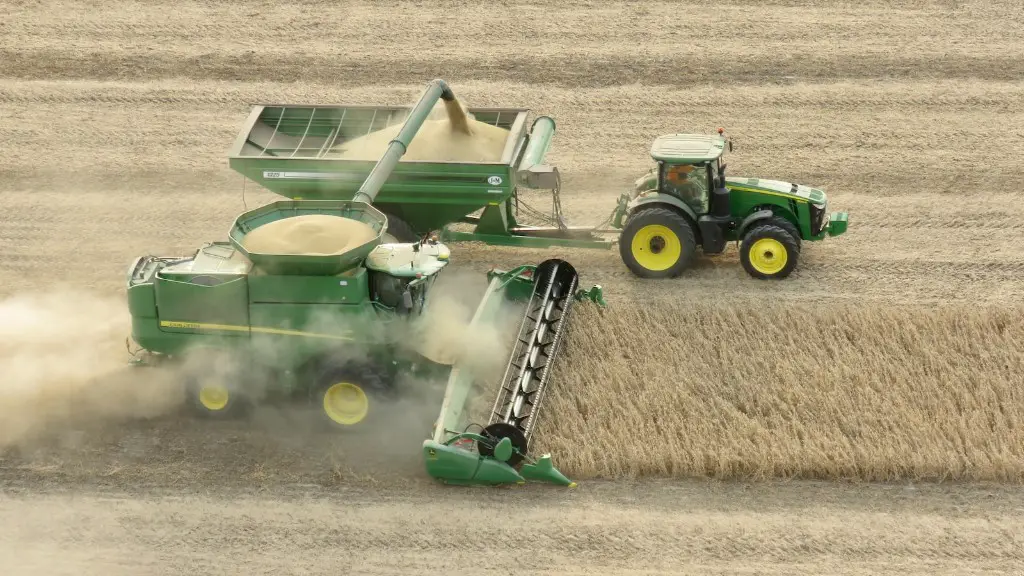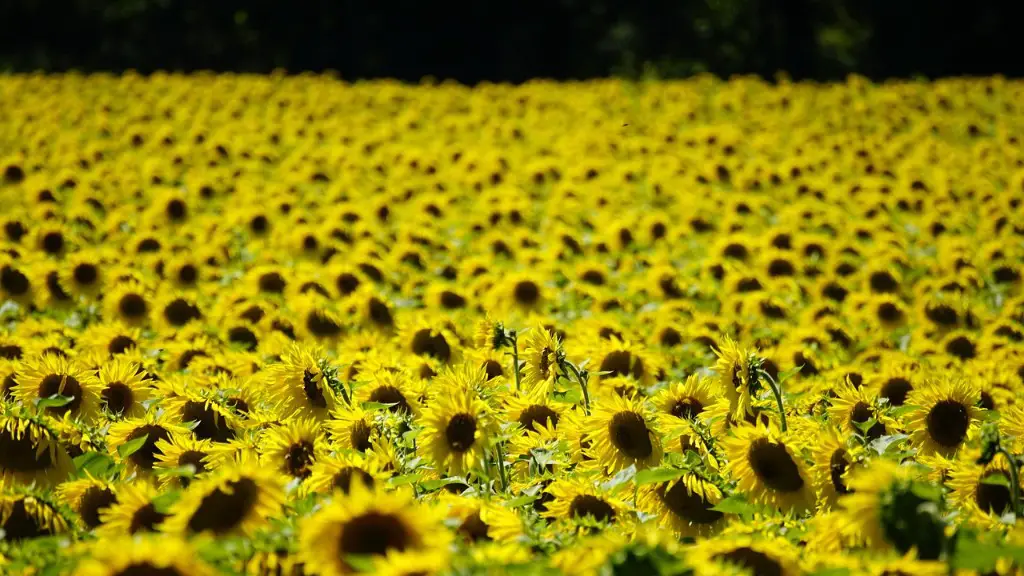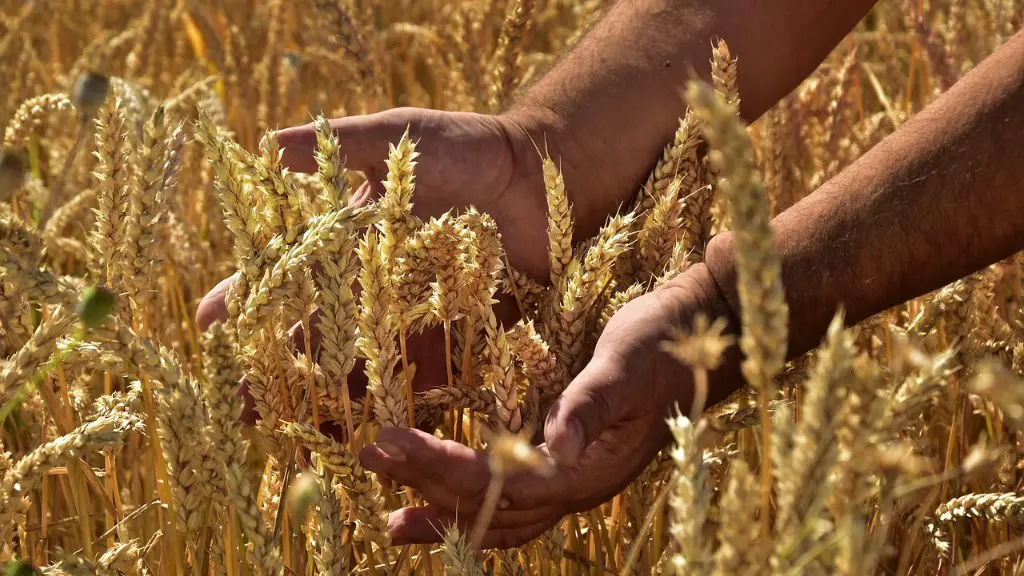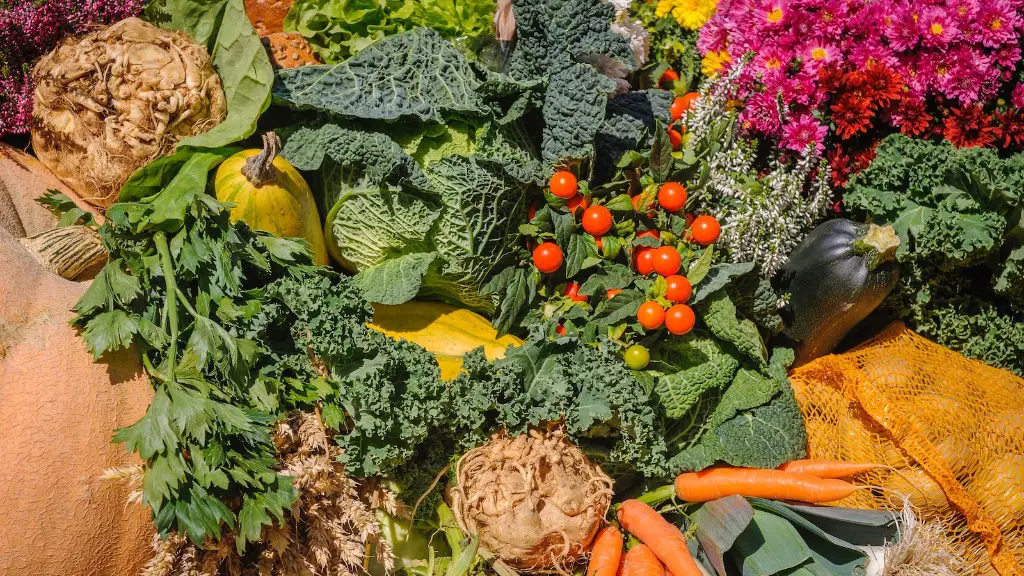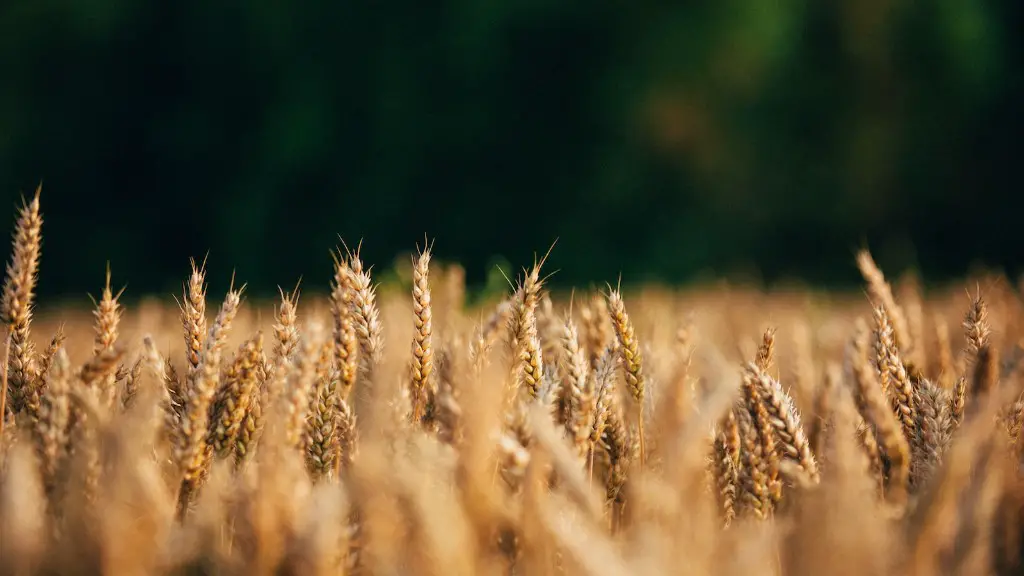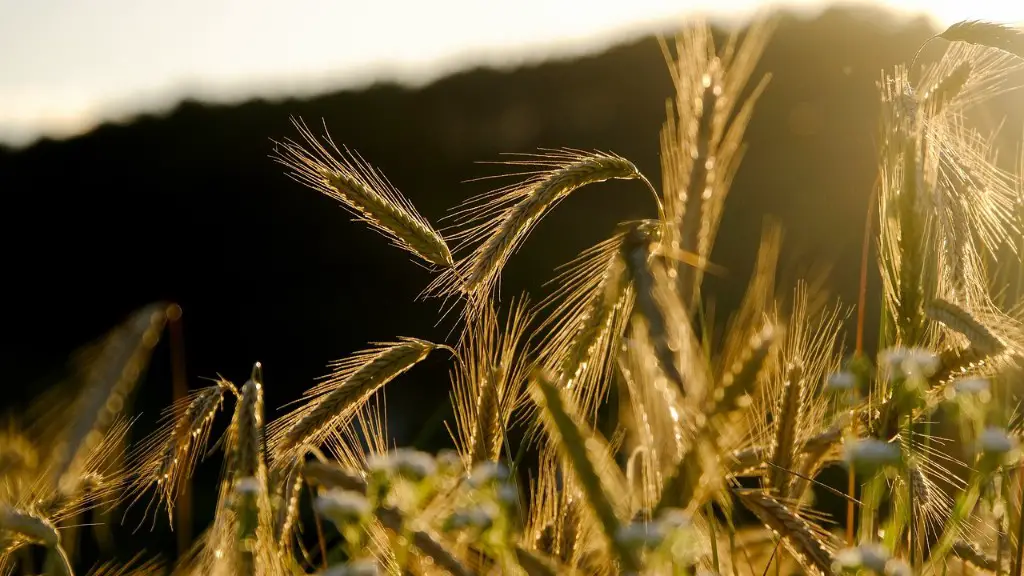American agriculture is among the most water-intensive in the world. It accounts for 80% of the nation’s water consumption, making it the largest user of freshwater resources. Reducing water use in agriculture is key to sustaining our valuable water resources. Here are some ways to do just that:
-Use irrigation systems that are specific to the needs of your crops.
– Implement drought-tolerant practices such as crop rotation and cover crops.
– Use technology to your advantage; there are many water-saving devices and irrigation systems available on the market today.
– Educate yourself and others about the importance of water conservation in agriculture.
There are many ways to reduce water use in agriculture. One way is to use irrigation methods that are more efficient. For example, micro-irrigation systems can be used to deliver water directly to the roots of plants, and this can reduce water usage by up to 90%. Another way to reduce water use in agriculture is to grow crops that are more drought-tolerant. For example, crops like sorghum and maize are more tolerant to drought conditions than other crops. Finally, using mulch can help reduce water evaporation from the soil, and this can also help reduce water usage in agriculture.
How farmers can conserve water?
Micro-drip irrigation is a type of irrigation system that uses small, drip emitters to deliver water directly to the roots of plants. This type of irrigation is much more efficient than other types of irrigation, such as flood irrigation or center-pivot sprinklers, and can help farmers save a lot of water.
Water is a precious resource and it is important that we all do our part to conserve it. Here are ten water-saving tips that will help you reduce your water footprint:
1. Switch to showers – Taking a shower uses less water than a bath, so make the switch and save!
2. Keep the sprinklers off – Water your plants and lawn during the cooler hours of the day to reduce evaporation.
3. Turn off the tap – When brushing your teeth or washing your hands, turn the tap off while you lather up.
4. Fill up the washing up bowl – Don’t let the water run while you’re washing dishes. Fill up a bowl and use that water instead.
5. Make sure your dishwasher is full! – Running a dishwasher uses less water than washing dishes by hand, but only if it’s full.
6. Use leftover cooking water – Water from boiled vegetables or cooked pasta can be reused to water plants. Just let it cool first!
7. Fixing leaky taps is an easy fix for reducing your water footprint – A dripping tap can waste up to 15 litres of water per day. Fixing leaks is
What are ways to reduce water usage
Water is a precious resource, and it’s important to conserve it whenever possible. Here are 25 ways you can save water in your home and reduce your water bill:
1. Check your toilet for leaks. A leaky toilet can waste hundreds of gallons of water per day.
2. Stop using your toilet as an ashtray or wastebasket. Don’t flush cigarettes or other items that don’t belong in the toilet.
3. Put a plastic bottle in your toilet tank. This will reduce the amount of water used with each flush.
4. Take shorter showers. This will save both water and energy.
5. Install water-saving shower heads or flow restrictors. These can save you up to 50% on your shower water use.
6. Take baths. A full bathtub uses less water than taking multiple showers.
7. Turn off the water while brushing your teeth. This can save up to 4 gallons of water per day.
8. Turn off the water while shaving. This can save even more water than brushing your teeth.
9. Don’t let the faucet run while washing dishes. Fill up the sink
Drip irrigation is a great way to water your plants while saving water. With drip irrigation, water is delivered directly to the roots of the plants, which can lead to better growth. Drip irrigation can also decrease evaporation, which can save up to 80 percent more water.
What is the most water efficient farming method?
Drip irrigation is a type of watering system that delivers water slowly and directly to the roots of plants. This conserves between 20-50% of the water you would otherwise use in irrigation while reducing other negatives like runoff, surface evaporation and the potential for overwatering.
There are several ways to help prevent water scarcity and conserve water:
1. Implement sustainable water management practices.
2. Improve water infrastructure to promote water conservation and efficiency.
3. Use reclaimed water where possible.
4. Control pollution and improve sewage treatment.
5. Raise awareness about water conservation and educate others on the importance of this issue.
What are 20 ways to conserve water?
Water is a vital resource and we all need to do our bit to conserve it. Here are 20 ways that you can save water:
1. Use a displacement device (a water-filled bottle) in the toilet tank to reduce the amount of water required to flush.
2. Use toilet only for its intended purpose.
3. Repair leaky taps or toilets immediately.
4. Consider a small capacity toilet when replacing an old one.
5. Take shorter showers.
6. Turn the tap off while brushing your teeth.
7. Collect rainwater in a barrel for watering plants.
8. Use a broom instead of a hose to clean your driveway.
9. Wash your car less frequently.
10. Change your lawn for drought tolerant plants.
11. Install a grey water system to reuse water from showers and laundry for watering plants.
12. Use a front loading washing machine which uses less water.
13. Stop using running water to thaw food – defrost it in the fridge instead.
14. Put a plug in the sink while washing up, then wash all the dishes at once.
15. Don’t
1. When watering plants, apply water only as fast as the soil can absorb it.
2. Use sprinklers that deliver big drops of water, close to the ground.
3. Use a water-conserving icemaker.
4. Teach children to turn off faucets tightly after each use.
What are 30 ways to save water
1. Check for leaks: Regularly check your plumbing for any leaks. A small drip can waste a lot of water over time.
2. Measure your water flow: Use a water flow meter to measure the amount of water you are using. This will help you to find any areas where you can save water.
3. Check your toilet cistern for leaks: Put a few drops of food colouring in your toilet cistern. If the colour appears in the toilet bowl, you have a leak.
4. If you have a single-flush toilet put a 15-litre plastic bottle filled with water in the cistern to reduce the amount of water you flush: This will save water every time you flush the toilet.
5. Install a low-flush toilet: A low-flush toilet uses less water per flush, saving you water in the long run.
6. Use a bucket to catch water when you run the taps: Use this water to water plants or clean the floor.
7. Turn the tap off while brushing your teeth: This can save up to 6 litres of water per minute.
8. Invest in a rainwater tank: This will collect rainwater which can be used
We should all be doing our part to conserve water. Here are some reasons why you might want to use less water:
-Save money on your power bills by using less energy to heat and pump water
-Delay or prevent expansion of costly water and wastewater treatment plants in your community which can save money on taxes
-Reduce water shortage frequency and impacts.
Let’s all do our part to save this vital resource!
What is the most sustainable way to irrigate crops and save water?
Drip irrigation is an irrigation method that delivers water directly to the root zone of the plant, in a controlled and continuous manner. It is a powerful technology that can reduce water consumption by 20-40% while increasing crop yield by 20-50% compared to furrow (flood) irrigation, depending on the crop grown.
Irrigated agriculture is the largest user of water globally, accounting for 70% of water use worldwide. This trend is encouraged by the fact that farmers in most countries do not pay for the full cost of the water they use. In many OECD countries, agriculture irrigation accounts for over 40% of water use.
What are three ways that farmers are working to use water more efficiently
The adoption of conservation practices on the farm can have a big impact on water conservation. By making improvements to irrigation systems and using cover crops, farmers can reduce the amount of water used on their farms and help keep water resources healthy.
Water is a vital resource for life, and clean water is essential for our health and wellbeing. There are a number of simple things we can do to help improve water quality in our homes.
Flushing: Run cold water taps for two minutes before using water for drinking and cooking. This will help flush out any lead that may have accumulated in the pipes.
Cold Water Use: Do not use hot tap water for drinking and cooking. Hot water can leach lead from pipes and fixtures, so stick to cold water for drinking and cooking.
Water Filters: Routinely replace filter cartridges. This will help remove contaminants from your water supply.
Household Plumbing: Faucet Aerators:Water Heaters: Most households have a water heater. Check it regularly to ensure that it is operating properly and not leaking.
What are 3 sustainable ways to reduce and prevent water pollution?
Water pollution is a big problem in many communities. There are a few things you can do to help prevent water pollution.
One way to help is to pick up litter and throw it away in a garbage can. This helps to keep litter out of our waterways.
Another way to help is to blow or sweep fertilizer back onto the grass if it gets onto paved areas. This helps to keep fertilizers and chemicals from running into our waterways.
Mulching or composting grass or yard waste is also a great way to help prevent water pollution. This helps to keep organic matter out of our waterways.
Washing your car or outdoor equipment where it can flow to a gravel or grassy area instead of a street is also a good way to help prevent water pollution. This helps to keep soaps and chemicals from running into our waterways.
Water is one of the most important resources for sustaining life, and reducing our water use is critical for protecting this important resource. One way to reduce water use is to install waterless toilets, which use less water than traditional toilets. Waterless toilets are a great option for reducing water use in the home, and they can also help to reduce water waste in the sewer system. In addition, water efficient appliances, such as dishwashers and washing machines, can help to reduce water use in the home. Finally, water quantity monitoring can help to identify areas where water use is high, so that we can take steps to reduce our water use in those areas.
What are 5 easy water saving tips
Water is essential for life, but it’s a limited resource. According to the U.S. Environmental Protection Agency, the average person uses 80-100 gallons of water per day. Much of this water is wasted, which not only strains water resources, but also adds to your utility bills.
Here are 5 simple ways you can save water and money every day:
1. Take a shower for 5 minutes or less – A standard shower uses 2.5 gallons of water per minute, so cutting your shower time by just a couple of minutes can make a big difference. Trying turning the water off while you soap up, then turn it back on to rinse. You can also install a low-flow showerhead, which uses less water without sacrificing water pressure.
2. Install a water-saving toilet flush system – If your toilet was manufactured before 1994, it probably uses 3-5 gallons of water per flush. Newer, water-saving toilets use only 1.6 gallons per flush, which can save you a significant amount of water (and money) over time.
3. Turn off the tap while brushing your teeth & washing your hands – It’s easy to forget, but keeping the water running while
Water is essential for life, but it’s a limited resource. In many parts of the world, water is already in short supply. With the world’s population expected to rise to 9 billion by 2050, we need to find ways to use water more efficiently.
There are many ways to save water. Here are seven ways you can make a difference:
1. Water your lawn just 1-2 times a week.
2. Don’t water your lawn between 9 am and 5 pm. The sun and wind will just evaporate the water.
3. Check for plumbing leaks. A leaky faucet can waste up to 3,000 gallons of water per year.
4. Install water-efficient fixtures. A low-flow showerhead can save up to 700 gallons of water per year.
5. Take shorter showers. A 10-minute shower uses about 25 gallons of water.
6. Put a nozzle on your garden hose. A hose left running can waste up to 100 gallons of water per hour.
7. Don’t let the faucet run and run. When brushing your teeth or washing your hands, turn the water off when you’re not using it.
Every
Final Words
There are a few ways water use in agriculture can be reduced:
– Planting crops that are native to the area and require less water to grow
– Using irrigation methods that are more efficient, such as drip irrigation
– Applying mulch to the soil to help retain water
– Implementing water-saving strategies such as irrigation scheduling
There are many ways to reduce water use in agriculture. One way is to change the way you irrigate your crops. Another way is to choose crops that are more drought-resistant. You can also reduce water use by using mulch and other methods to reduce evaporation.
